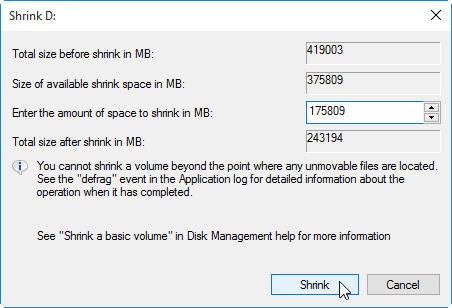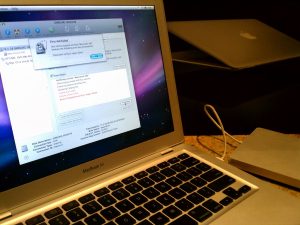

- PARTITION HARD DRIVE FOR WINDOWS ON MAC HOW TO
- PARTITION HARD DRIVE FOR WINDOWS ON MAC INSTALL
- PARTITION HARD DRIVE FOR WINDOWS ON MAC PORTABLE
- PARTITION HARD DRIVE FOR WINDOWS ON MAC PRO
PARTITION HARD DRIVE FOR WINDOWS ON MAC PRO
Three weeks ago, I bought a brand new 2TB Seagate Expansion to backup my MacBook Pro before I updated it to the latest macOS.

Most External Hard Drives Are Initiated with NTFSĭuring the last several years, I’ve used a few external drives, including a 500GB WD My Passport, 32GB Lexar flash drive, and a few others. I highly recommend you also create multiple partitions. Pro tip: If your external drive has a large volume, like mine – a 2TB Seagate Expansion. The operation will erase all data and your files will be gone for good. Important note: If you have useful files stored on the external drive, be sure to copy or transfer them to another safe place prior to formatting. Just follow this easy step-by-step guide and you’re all set.
PARTITION HARD DRIVE FOR WINDOWS ON MAC HOW TO
In this post, I’m going to show you how to format your external drive for a Mac-compatible file system i.e. Apple Mac machines support a different file system. That’s all because it’s been initialized with Windows NT File System (NTFS), which is primarily for PCs. But somehow, macOS doesn’t allow you to write data to the drive.
PARTITION HARD DRIVE FOR WINDOWS ON MAC PORTABLE
Be sure you do not save recovered files on the source its pulling from.So, you just bought a new external hard drive or a portable SSD and wanted to use it on your Mac. You're going to want to scan for raw files and ntfs partitions. I prefer DMDE but have used just about all of them with good results. I prefer Hirens-PE or PartedMagic most of the time but there is bootable tools like Paragon that focus only on data recovery and cloning.Īny recovery software should be able to recover any files that were not overwritten. Could even be on that same machine if you want but you solved the worry about losing more by not letting that hard drive boot anything.Ī bootable usb drive is a valid method to perform the recovery on the hardware you have! UBCD is kinda dated but still works for most things until you get into newer machines. Then I would plug that old drive into another computer using a usb adapter if needed.

If it were me, I would put a cheap ssd in the old machine just to breath new life into it. Then, would it be better to create an image of the old hard drive on a new hard drive, or completely clone the old hard drive onto a new hard drive? Finally, is there a certain tool that works well to recover data that didn't get overwritten by an OS install?Ĭloning or Imaging to a new drive isn't necessary unless the drive is degrading or you are pressured for time. In the past I've used an Ultimate Boot CD to clone a PC drive without booting from it, but I don't know if that would work for a macbook as well, or if there is a better tool? Specifically, one that can copy the entire drive bit for bit so there is a chance to recover the deleted data. My rough plan is to start by cloning the Drive bit for bit, and then using some recovery software on the clone to see if any of the data is still there.
PARTITION HARD DRIVE FOR WINDOWS ON MAC INSTALL
My thought is, there is a possibility the data is still on the hard drive if the OSX install didn't overwrite it, so I'd like to try to recover it. The computer hasn't been turned on since then, but it did have the fresh OSX install. It's nothing critical, so I'm not going to bother with a recovery service, but I'd like to try to get it back if I can. Shortly after, I realized there was some data on the Windows partition that I wish I had thought to back up first. Recently I reinstalled OSX on the drive planning to let my kids start using it, doing a quick format (not zeroing out the drive, just clearing the partition data and writing the new partition data and OSX back on to it). I had regular backups of the OSX portion, but only used the windows portion for gaming so I didn't bother backing it up. I've got an old 2010 Macbook pro, back when I was using it I had it set up to dual boot OSX or Windows from a single hard drive.


 0 kommentar(er)
0 kommentar(er)
